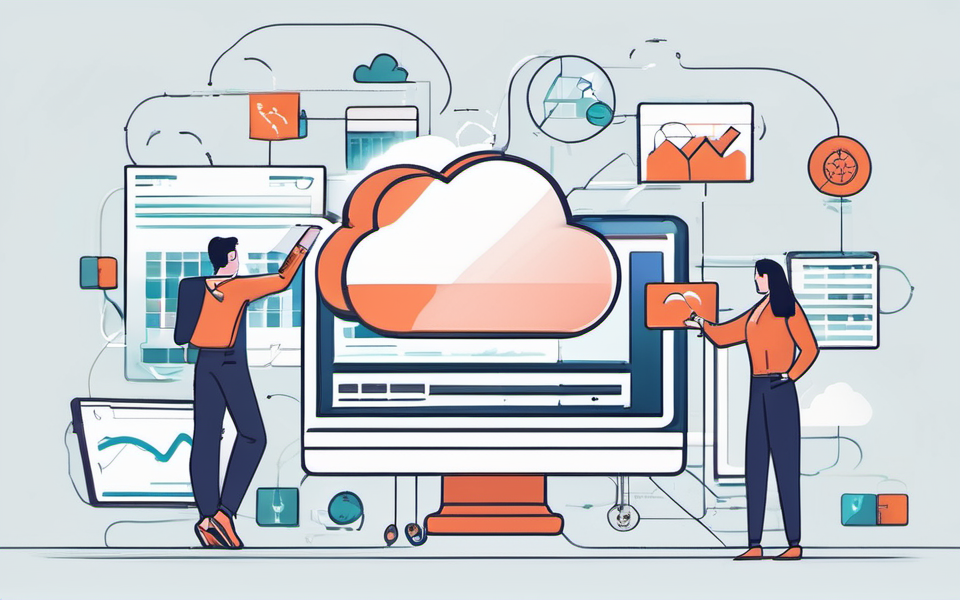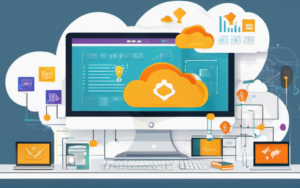Imagine a world where your apps can grow, adapt, and thrive with hardly any effort from you. Yes, it’s real, and it’s called cloud-native applications! Let’s take a stroll through this exciting journey and uncover the magic behind it.
What Are Cloud-Native Applications?
Think about traditional applications as old-fashioned cars. They’re dependable but not always easy to upgrade. Enter cloud-native applications – the sports cars of the tech world. These modern apps are born and bred in the cloud. Instead of living on bulky servers, they float in the cloud, making them incredibly flexible and scalable.
Cloud-native applications are built using microservices. Imagine breaking a huge, complex machine into smaller, manageable parts. Each part can function independently but also work together seamlessly. This makes it easier to update, fix, or scale different parts without disrupting the whole application.
Moreover, cloud-native applications leverage containerization. Containers are like little packages that hold everything the application needs to run. They make it super easy to move applications from one environment to another without any hiccups.
The Journey to Cloud-Native Applications
Shift your mind back to the days when apps were monolithic. They were heavy, slow to update, and challenging to manage. Businesses had to predict the maximum load and build their systems to handle it, which meant lots of wasted resources during quieter times.
As technology evolved, companies noticed these inefficiencies and began exploring new horizons. This exploration led to the creation of cloud-native architecture. Businesses started breaking down their applications into microservices and packaging them into containers. This evolution was a game-changer, bringing flexibility, speed, and efficiency.
Cloud-native applications also adopted continuous integration and continuous deployment (CI/CD) practices. This meant developers could now make frequent, smaller updates rather than waiting for a massive overhaul. These rapid updates help in responding quickly to market demands and customer needs.
Benefits of Going Cloud-Native
Now, let’s talk benefits. Let’s say you own a busy café. Cloud-native applications are like having a highly-trained, flexible team ready to handle fluctuating customer demands effortlessly. Here are a few standout perks:
- Scalability: Cloud-native apps can scale up or down based on demand. You pay only for what you use, making it cost-effective.
- Resilience: If one part of the app fails, the rest continues to work. It’s like having backup staff ready to jump in if someone calls out sick.
- Speed: Developers can push out updates and new features faster. Imagine constantly improving your café menu based on customer feedback in real-time.
- Portability: Move your app effortlessly between different environments without breaking a sweat. Just like relocating your café to new locations smoothly.
Challenges to Keep in Mind
Every rose has its thorns, and cloud-native applications are no different. One major challenge is the learning curve. Moving from traditional app development to cloud-native requires new skills and tools.
Security is another concern. With data floating around in the cloud, there are risks of breaches. Companies need to ensure robust security measures to protect their data. Additionally, managing multiple microservices can get complicated. It’s like juggling several balls at once – it requires practice and precision.
Despite these challenges, the benefits often outweigh the cons. Many organizations find that the investment in learning and security pays off in the long run with enhanced app performance and customer satisfaction.
The Future of Cloud-Native Applications
The future looks bright for cloud-native applications. As more businesses realize their potential, the tech world is buzzing with innovation. New tools and platforms are emerging to make the transition smoother and more secure.
Artificial Intelligence (AI) and Machine Learning (ML) are also making their way into cloud-native applications, enhancing capabilities and offering smarter solutions. Imagine your café having an AI-driven system that predicts customer preferences and automatically adjusts the menu!
Moreover, the rise of edge computing – bringing computation closer to where it’s needed – is set to complement cloud-native apps. This means faster response times and even greater efficiency, like serving your café customers at lightning speed.




